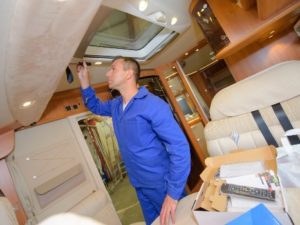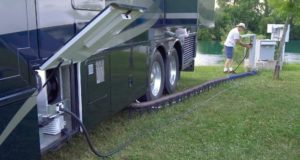Inspection Process
Prerequisites
In order to provide the most thorough inspection we ask that the RV be “Staged” just as it would be in a campground. This includes 50-amp or 30-amp power as applicable, city water connection with regulator, sewer connection, propane, and fuel for generator if equipped. Since most homes and storage yards don’t have these utilities, one of the easiest ways to accomplish this is to move the RV to a local campground for the day. If these prerequisites cannot be met the inspection process will be limited.
Inspection Day
The inspection starts early, and a full will take between 6 and 10 hours depending on the type of RV, number of slides, etc. During the inspection the RV components are rated on the following scale:
- Acceptable – Component is performing its intended function with little or no visible wear
- Fair – Component is performing its intended function but there is visible wear
- Poor – Component is no longer performing its intended function and repair may be necessary
Throughout the inspection pictures are taken and areas of concern noted. Standardized tests are conducted on the 120-volt power system, 12-volt power system, propane system, appliances, and the Air Conditioner(s). Operation of all slide-outs, awnings, cargo doors, interior doors, and drawers is verified, and all interior furnishings are inspected for wear and tear.
Inspection Report
Once the physical inspection is completed, much of the information will already be captured in the software we use. We always strive to have the final report available by the end of the day following the inspection, and often have it completed by mid-day. On a phone call we will walk you through the report and answer any quesitons,



